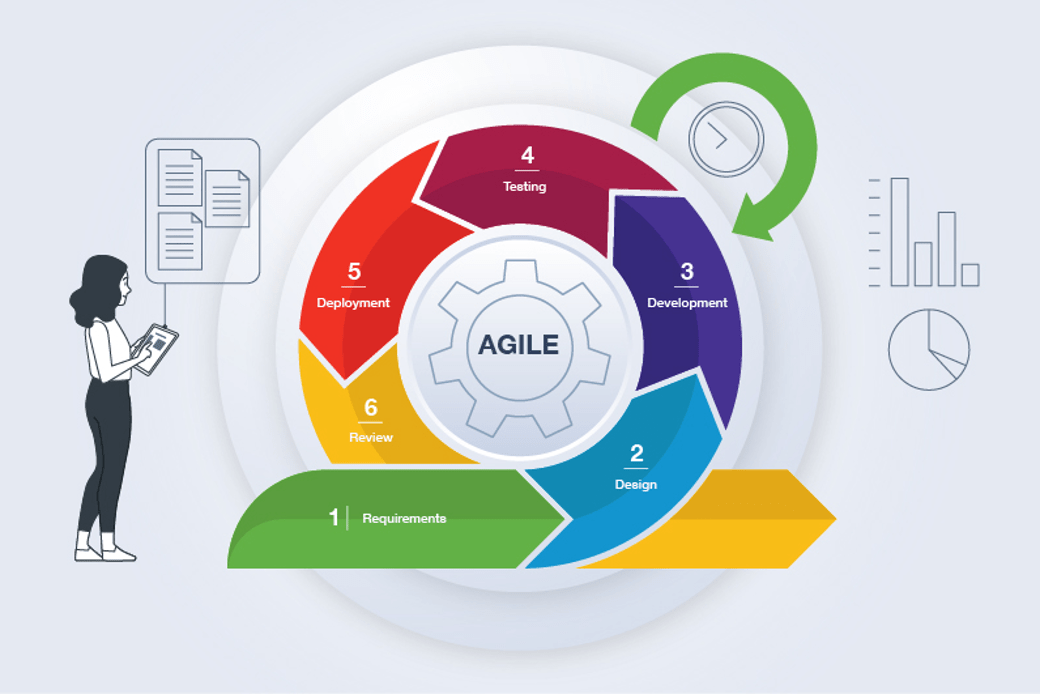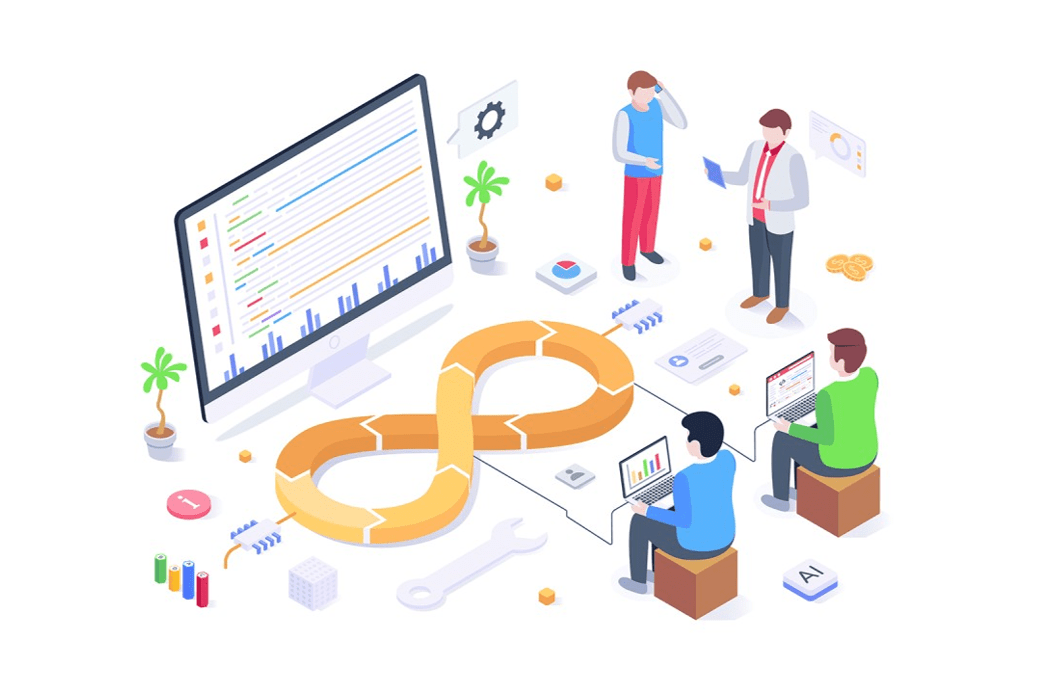How Agile Methodologies Enhance Development Projects
In the fast-paced realm of software development, agility isn't just a buzzword; it's a paradigm shift that has revolutionized how projects are conceived, executed, and delivered. Agile methodologies have emerged as the go-to approach for development projects of all sizes, offering a flexible and collaborative framework that adapts to the ever-evolving demands of the digital age.
In this article, we will explore the evolution of development methodologies, delve into the principles and frameworks that define agile, dissect real-world case studies, and unveil the key benefits, best practices, challenges, and solutions that come with embracing agile methodologies.
Understanding Agile Methodologies
Agile Principles: A Core Philosophy
At the heart of agile methodologies lies a set of principles that prioritize individuals and interactions, working solutions, customer collaboration, and responsiveness to change. Agile places a premium on communication, adaptability, and the delivery of incremental value.
Agile Frameworks: Scrum, Kanban, and More
Agile is not a one-size-fits-all approach; it encompasses a variety of frameworks tailored to different project needs. Scrum's time-boxed sprints, Kanban's visual workflow management, and Lean's focus on reducing waste are just a few examples. Each framework offers a unique set of tools to optimize development processes.
Agile vs. Traditional Waterfall: A Comparative Analysis
To truly grasp the advantages of Agile, it's essential to compare it to the traditional waterfall model. While the waterfall approach emphasizes linear, sequential phases, agile thrives on iteration, collaboration, and flexibility. Agile's responsiveness to change and customer feedback stands in stark contrast to the rigidity of waterfall.
Free Ebook: AI & ML for Enterprise
Learn how to integrate AI and machine learning into your enterprise applications with our comprehensive guide.
Download Free EbookAgile in Action: Real-World Case Studies

How Spotify Scaled with Agile
Spotify, the global music streaming giant, attributes much of its success to agile methodologies. The company's unique approach, known as the "Spotify model," combines agile practices with a focus on autonomous, cross-functional teams. This has allowed Spotify to scale rapidly while maintaining its innovative edge.
The Agile Journey of Salesforce
Salesforce, a leader in customer relationship management (CRM) software, embraced agile to enhance its product development. By breaking down complex projects into smaller, manageable pieces, Salesforce accelerated product delivery and improved collaboration across its global teams.
Agile at Amazon: Innovating at Scale
Amazon, the e-commerce behemoth, has adopted agile to drive innovation in various aspects of its business, from web services to logistics. The company's customer-centric approach aligns perfectly with agile principles, enabling Amazon to stay ahead in a highly competitive market.
The Impact of Agile in Government Projects
Even in traditionally bureaucratic environments, agile has made inroads. Governments worldwide are adopting agile methodologies to improve the efficiency and effectiveness of public projects. The United States Digital Service (USDS) and the UK Government Digital Service (GDS) is pioneering this transformation.
Key Benefits of Agile Methodologies

Rapid Iteration and Flexibility
Agile's iterative approach allows for rapid development and frequent releases, enabling teams to adapt to changing requirements and market dynamics. This iterative process promotes continual improvement and customer satisfaction.
Enhanced Collaboration and Communication
Agile promotes cross-functional teams that collaborate closely, fostering better communication and understanding between developers, designers, testers, and stakeholders. Daily stand-up meetings and regular retrospectives keep everyone aligned.
Customer-Centric Development
Agile puts the customer at the center of the development process. Continuous feedback and user involvement ensure that the final product aligns with customer needs and preferences, reducing the risk of costly pivots.
Continuous Quality Improvement
Agile methodologies emphasize testing and quality assurance throughout the development cycle. This focus on quality minimizes defects, enhances user satisfaction, and reduces post-release maintenance.
Early Issue Detection and Mitigation
By breaking projects into smaller increments, agile allows teams to identify issues early and address them proactively. This reduces the likelihood of major problems emerging late in the development process.
Agile Best Practices

Building Cross-Functional Teams
Cross-functional teams bring together individuals with diverse skills and perspectives, facilitating innovation and efficiency. These teams are empowered to make decisions collaboratively, reducing bottlenecks.
Prioritizing User Stories with Backlogs
User stories, often managed through product backlogs, provide a clear and prioritized list of features and tasks. Teams can focus on delivering the most valuable features first, enhancing user satisfaction.
Embracing Iterative Development
Iterative development means releasing smaller, functional increments of a project rather than waiting for a complete product. This approach allows for continuous user feedback and a quicker time-to-market.
Holding Regular Standup Meetings
Daily standup meetings, or "scrums," keep team members informed about each other's progress and any obstacles they face. These short, focused meetings foster collaboration and accountability.
Continuous Integration and Deployment
Automated tools for continuous integration and deployment ensure that code changes are integrated and tested regularly. This reduces integration issues and speeds up the development process.
Agile Challenges and Solutions

Managing Scope Creep and Changing Requirements
While agile allows for flexibility, it also requires careful scope management. Changes must be evaluated for their impact on the project's timeline and budget. Regularly reviewing and adjusting project priorities can help manage scope creep.
Distributed Team Collaboration
In an increasingly globalized world, development teams are often spread across different time zones and locations. Effective communication tools, time management strategies, and periodic face-to-face meetings can mitigate the challenges of distributed collaboration.
Scaling Agile for Large Projects
While agile is ideal for small to medium-sized projects, scaling it for enterprise-level endeavors can be complex. Frameworks like the Scaled Agile Framework (SAFe) and Large Scale Scrum (LeSS) offer guidance on implementing agile at scale.
Balancing Flexibility and Predictability
Agile's emphasis on flexibility can sometimes conflict with the need for predictability in larger organizations. Striking the right balance requires clear project goals, metrics, and a well-defined product vision.
Measuring Success in Agile Projects

Key Metrics for Agile Success
Measuring the success of agile projects goes beyond traditional metrics. Key performance indicators (KPIs) may include velocity, cycle time, and customer satisfaction. These metrics provide insights into team performance and project health.
Agile Tools for Project Management
A variety of project management tools and software, such as Jira, Trello, and Asana, are tailored to support agile methodologies. These tools help teams track progress, manage backlogs, and collaborate effectively.
The Role of Agile Coach or Scrum Master
Agile coaches and Scrum Masters play a vital role in guiding teams through the agile process. They facilitate meetings, remove obstacles, and ensure adherence to agile principles, helping teams reach their full potential.
Conclusion
Agile methodologies have reshaped the landscape of software development, offering a responsive and collaborative approach that aligns with the demands of the digital era. From empowering industry giants like Spotify and Amazon to revolutionizing government projects, agile's impact is undeniable.
As organizations continue to embrace agile, they must navigate challenges, adopt best practices, and measure success using agile-specific metrics. Agile isn't just a methodology; it's a mindset that fosters innovation, flexibility, and a relentless focus on delivering value to customers. In the ever-evolving world of technology, Agile is the compass that points development projects toward success.
Free Ebook: AI & ML for Enterprise
Learn how to integrate AI and machine learning into your enterprise applications with our comprehensive guide.